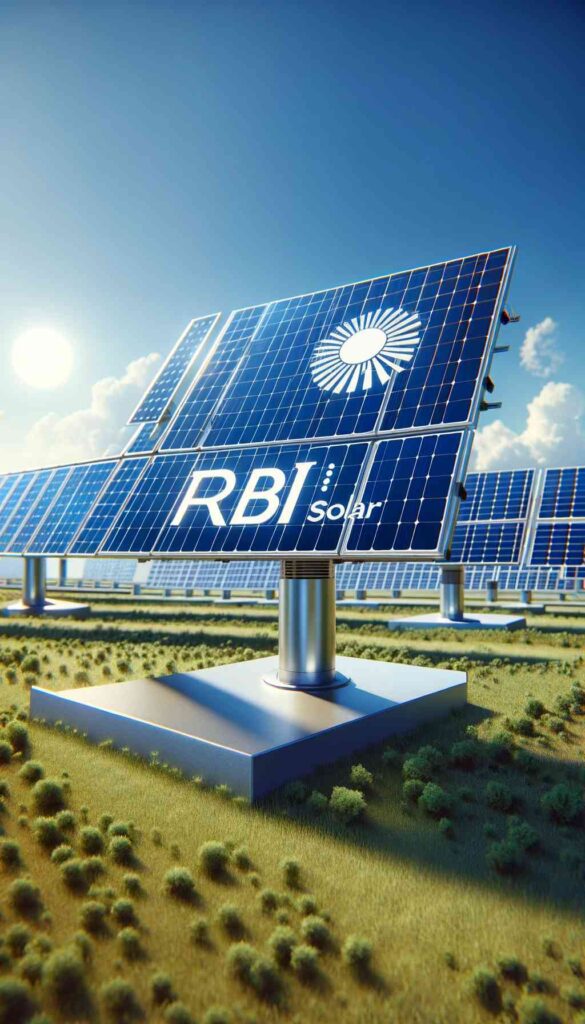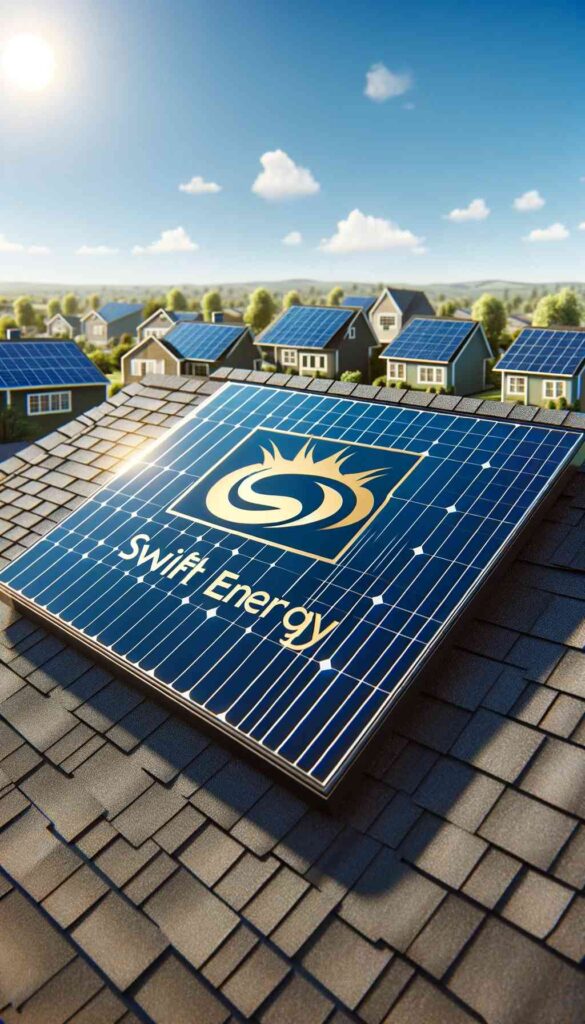
Key Takeaways
- Switching to solar energy can reduce your electricity bills by up to 70% depending on your energy consumption and location.
- Solar panels help decrease your carbon footprint, contributing to a cleaner environment.
- Government incentives and tax credits can cover up to 30% of the installation costs.
- Solar energy increases the value of your home by an average of 4.1%.
- Using solar power can enhance your lifestyle with energy independence and sustainable living.
Embracing the Solar Lifestyle
Imagine waking up each morning knowing your home is powered by the sun. Embracing the solar lifestyle means committing to sustainable living, achieving energy independence, and reducing your environmental impact. Transitioning to solar is simpler than you might think, starting with understanding the immediate benefits and long-term enhancements, and taking steps to integrate solar power into your daily routine.
Immediate Benefits of Going Solar
One of the first changes you’ll notice after installing solar panels is a significant reduction in your electricity bills. Depending on your location and energy usage, you could save up to 70% on your energy costs. Besides the savings, many utility companies offer net metering, allowing you to sell excess power back to the grid, which can further reduce your expenses.
Solar energy also provides a reliable and consistent power source. Unlike fossil fuels, solar energy doesn’t deplete, ensuring you have a steady supply of electricity, even during peak demand periods. This reliability is particularly beneficial in areas prone to power outages.
Environmental Impact and Sustainability
Switching to solar energy is a powerful way to reduce your carbon footprint. Traditional electricity generation relies heavily on fossil fuels, which release harmful greenhouse gases into the atmosphere. Solar power, on the other hand, is clean and renewable. By choosing solar, you’re actively contributing to a healthier planet.
An average residential solar panel system can eliminate three to four tons of carbon emissions each year, equivalent to planting over 100 trees annually. This shift not only benefits the environment but also sets a positive example for others in your community.
Long-term Lifestyle Enhancements
Adopting solar power offers numerous benefits, such as increased energy independence, reduced reliance on the grid, and greater control over your energy supply. Homes with solar installations often sell faster and at higher prices, boosting property value. Embracing solar also promotes a sustainable lifestyle, aligning with global efforts to combat climate change.
Understanding Solar Power
To truly appreciate the benefits of solar energy, it’s essential to understand how it works. At its core, solar power harnesses the sun’s energy and converts it into electricity that can power your home, business, or any other application.
How Solar Panels Work
Solar panels, also known as photovoltaic (PV) panels, are made up of many solar cells. These cells are typically made from silicon and work by absorbing sunlight. When sunlight hits a solar cell, it causes electrons to become energized and move, creating an electric current.
This current is captured by wiring within the panel and directed to an inverter, which converts the direct current (DC) into alternating current (AC). AC is the type of electricity used in most homes and businesses. Solar panels enable you to harness the sun’s energy and convert it into usable electricity.
Types of Solar Energy Systems
There are several types of solar energy systems, each suited to different needs and preferences:
- Grid-tied systems: These are connected to the public electricity grid and are the most common type of solar energy system. They allow you to use solar power when available and draw from the grid when necessary.
- Off-grid systems: These are independent of the public grid and typically include battery storage to ensure power availability at all times. They are ideal for remote locations.
- Hybrid systems: Combining elements of both grid-tied and off-grid systems, hybrids use battery storage to store excess power for use when solar production is low.
Solar Energy and Grid Integration
Integrating solar energy with the existing grid can seem complex, but it’s a well-established process. When your solar panels produce more electricity than you need, the excess power is sent back to the grid. In return, your utility company provides credits that reduce your future bills.
This system, known as net metering, ensures you make the most of your solar investment by maximizing energy savings. It also stabilizes the grid by contributing clean energy during peak periods.

Setting Up Your Solar System
Embarking on the solar journey requires careful planning and consideration. From evaluating your home’s solar potential to selecting the right equipment, each step is essential in ensuring a successful transition.
Evaluating Solar Potential at Home
Before installing solar panels, it’s important to assess your home’s solar potential. This involves evaluating factors like roof orientation, shading, and available space.
A south-facing roof with minimal shading is ideal for solar panels. However, advancements in technology have made it possible to install panels on east or west-facing roofs as well. Consider also any potential obstructions like trees or buildings that might cast shadows on your panels.
Selecting the Right Solar Equipment
Choosing the right solar equipment is a critical step in your journey towards sustainable living. It starts with understanding the components of a solar system, including solar panels, inverters, and battery storage. Each component plays a vital role in harnessing, converting, and storing solar energy.
When selecting solar panels, consider their efficiency, durability, and warranty. High-efficiency panels convert more sunlight into electricity, maximizing energy production. Look for panels with a robust warranty, often ranging from 25 to 30 years, ensuring long-term performance.
Inverters are equally important as they convert the DC electricity generated by panels into AC electricity used in homes. Choose inverters with high efficiency and reliability to ensure optimal energy conversion. For those opting for energy independence, battery storage systems are essential. They store excess energy for use during nighttime or cloudy days, providing a continuous power supply.
Installation Process Simplified
The installation process of solar panels might seem daunting, but with the right guidance, it becomes manageable. Start by consulting a reputable solar installer who will assess your property and provide a customized plan. This plan will detail the optimal panel placement, system size, and estimated costs.
Once the plan is finalized, the installation process typically takes a few days. It involves mounting the panels on your roof, connecting them to the inverter, and integrating the system with your home’s electrical grid. Professional installers ensure all components are securely fitted and operational.
After installation, the system undergoes a series of tests to verify its efficiency and safety. Once approved, you can start enjoying the benefits of solar energy immediately.
Maintenance and Troubleshooting
Maintaining your solar system is relatively straightforward. Regular cleaning of the panels ensures maximum sunlight absorption, especially in areas prone to dust or pollen. A simple rinse with water can often suffice, but professional cleaning services are available for more thorough maintenance.
Besides cleaning, it’s important to monitor your system’s performance. Most modern systems come with monitoring apps that allow you to track energy production and detect any irregularities. If you notice a significant drop in performance, it might indicate a need for professional inspection.
In case of technical issues, consult your installer or manufacturer. Most solar equipment comes with warranties that cover repairs and replacements, ensuring your system remains functional for years to come.

Economic Benefits of Solar Energy
Solar energy offers significant economic benefits, from reducing energy bills to increasing property value. Government incentives and tax credits can lower installation costs, making solar more accessible to homeowners.
Reducing Energy Bills
One immediate economic benefit of solar energy is the significant reduction in electricity bills. By generating your own power, you can cut costs by up to 70% in sunny regions. Net metering programs also credit you for excess electricity, potentially resulting in payments from utility companies instead of bills.
Accessing Solar Incentives and Tax Credits
Governments offer incentives and tax credits to encourage solar adoption. In the U.S., the federal solar investment tax credit (ITC) allows homeowners to deduct 30% of installation costs from their taxes, reducing the financial burden. Many states and municipalities provide rebates and credits, further lowering costs and making solar energy more affordable.
Increasing Property Value
Installing solar panels not only reduces energy costs but also increases your property’s value. Homes with solar systems are often more attractive to buyers, selling faster and at higher prices. According to studies, solar installations can increase home value by an average of 4.1%.
This increase is attributed to the long-term savings on energy bills and the appeal of sustainable living. Buyers recognize the value of a home with lower operating costs and reduced environmental impact, making solar-equipped properties a desirable investment.
Broader Impacts of a Solar-Powered Life
Adopting solar energy extends beyond individual benefits, contributing to broader societal and environmental impacts. By choosing solar, you play a part in community development, technological innovation, and the promotion of renewable energy.
Community Development and Renewable Advocacy
When you go solar, you inspire others in your community to consider renewable energy. This collective shift can lead to increased demand for solar installations, boosting local economies and creating jobs in the renewable energy sector.
Your commitment to solar power can encourage local governments to invest in renewable infrastructure, fostering a sustainable community. By advocating for solar energy, you contribute to a cleaner, more resilient energy future.
Innovations in Solar Technology
The solar industry is continually evolving, with innovations improving efficiency, affordability, and accessibility. Advances in solar panel technology, such as bifacial panels that capture sunlight from both sides, increase energy production.
Also, improvements in battery storage technology make solar power more reliable, allowing for greater energy independence. As these innovations continue, solar energy becomes an even more viable and attractive option for homeowners worldwide.
Solar-Powered Products and Gadgets
Beyond powering homes, solar energy is revolutionizing everyday products and gadgets. From solar-powered chargers and lights to solar cookers and backpacks, these innovations make it easier to integrate solar energy into daily life.
For example, solar chargers provide a convenient way to keep devices powered while on the go, reducing reliance on traditional electricity sources. Similarly, solar lights offer an eco-friendly solution for outdoor lighting, enhancing safety and ambiance without increasing energy bills.
By embracing these solar-powered products, you further reduce your carbon footprint and promote sustainable living in every aspect of your life.

Transitioning to a Solar-Powered Home
Making the transition to a solar-powered home is an empowering decision that promises numerous benefits, from reducing energy costs to enhancing sustainability. The journey begins with understanding the steps involved and preparing for the changes that come with it. This transition not only affects your energy consumption but also influences your lifestyle, encouraging more mindful and eco-friendly practices.
Steps to Shift Your Lifestyle
Transitioning to a solar-powered lifestyle involves several key steps. By following these steps, you can ensure a smooth and successful transition:
- Research and Education: Start by learning about solar energy, its benefits, and the options available to you. Understanding the basics will help you make informed decisions.
- Assess Your Home’s Solar Potential: Evaluate your home’s suitability for solar panels, considering factors like roof orientation, shading, and available space.
- Consult with Professionals: Reach out to reputable solar installers for assessments and quotes. They can provide valuable insights and help you choose the right system for your needs.
- Secure Financing and Incentives: Explore financing options and take advantage of government incentives to reduce the upfront costs of installation.
- Prepare for Installation: Once you’ve selected a solar system, prepare your home for installation. This may involve minor modifications to your roof or electrical system.
By following these steps, you’ll be well on your way to enjoying the benefits of a solar-powered home.
Overcoming Common Challenges
While transitioning to solar power is a positive step, it’s not without its challenges. Understanding and preparing for these challenges can help you navigate the process more smoothly.
- Initial Installation Cost: While solar panels can be expensive upfront, government incentives and financing options can significantly reduce these costs. Long-term savings on energy bills often offset the initial investment.
- Home Suitability: Factors like roof orientation and shading can impact the efficiency of your solar system. Consulting with a professional installer can help identify and address these issues.
- Local Regulations: Some homeowners may face resistance from homeowners associations or local regulations. Research and understand any restrictions in your area before proceeding with installation.
Enhancing Daily Routines with Solar
Integrating solar energy into your daily routine can enhance your lifestyle in numerous ways. By adopting solar-powered products and practices, you can further reduce your carbon footprint and promote sustainability.
- Use Solar-Powered Chargers: These portable chargers reduce reliance on traditional electricity sources for your electronic devices.
- Install Solar Lights: Eco-friendly outdoor lighting that enhances safety and ambiance without increasing energy bills.
- Adopt Energy-Efficient Practices: Use appliances during peak sunlight hours to maximize solar energy usage.
- Reduce Carbon Footprint: Small changes in daily habits can optimize your solar system’s benefits and promote sustainability.
Conclusion: A Brighter Future with Solar
Going solar is more than a financial decision; it’s a commitment to a sustainable lifestyle. Solar energy reduces energy bills, decreases your carbon footprint, and contributes to a cleaner future. While there are challenges, the rewards make it worthwhile. As more people adopt solar power, we move closer to a world powered by clean, renewable resources, creating a brighter, more sustainable future together.

Frequently Asked Questions (FAQ)
What are the initial costs of installing solar panels?
The cost of installing solar panels can vary based on several factors, including system size, location, and equipment quality. On average, homeowners can expect to pay between $15,000 and $25,000 for a residential solar system before incentives. However, government incentives and tax credits can reduce these costs by up to 30%.
It’s important to research available incentives in your area and consult with a reputable solar installer for accurate cost estimates.
How do solar panels affect electricity bills?
Solar panels can significantly reduce your electricity bills by generating your own power. The amount of savings depends on your energy consumption, location, and the size of your solar system. In sunny regions, homeowners can save up to 70% on their energy costs.
Plus, many utility companies offer net metering programs, which credit you for excess electricity generated by your system. These credits further reduce your monthly expenses and can even result in receiving checks from your utility company instead of bills.
Are there government incentives for solar energy adoption?
Yes, many governments offer incentives and tax credits to encourage solar adoption. In the United States, the federal solar investment tax credit (ITC) allows homeowners to deduct 30% of their solar installation costs from their taxes. Many states and municipalities also offer additional rebates and credits, making solar energy more affordable.
What maintenance is required for solar panels?
Solar panels require minimal maintenance to ensure optimal performance. Regular cleaning is essential, especially in areas prone to dust or pollen. A simple rinse with water can often suffice, but professional cleaning services are available for more thorough maintenance.


